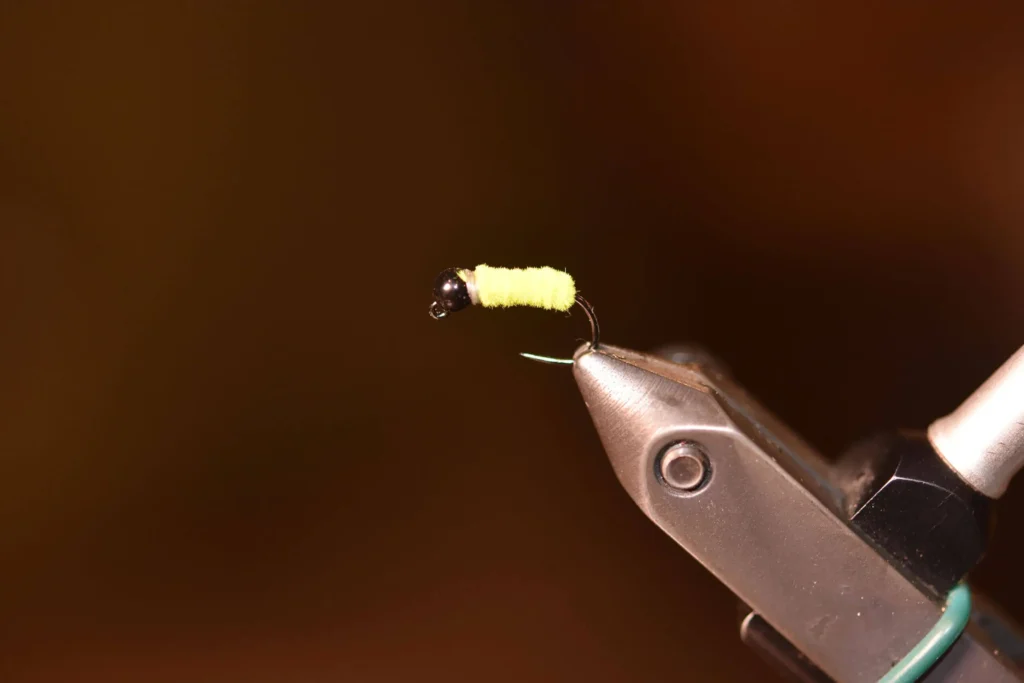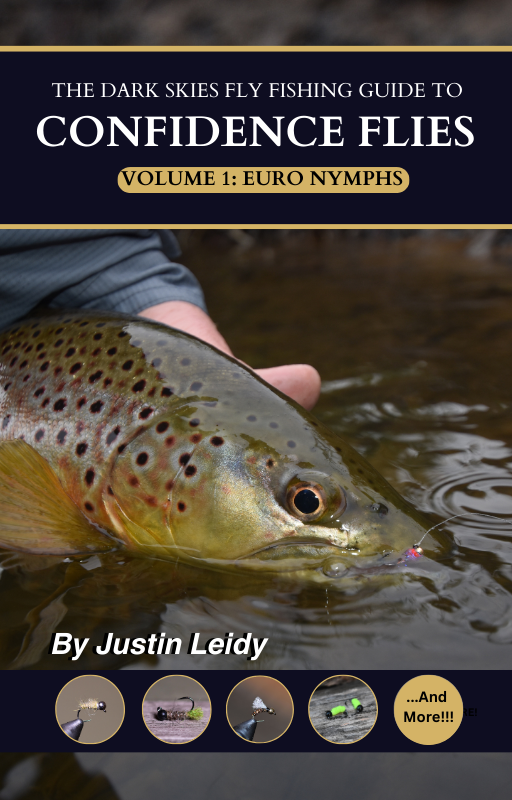How to Fish and Tie the Green Weenie

Summertime wild browns love eating the Green Weenie. I will never, ever be caught dead on a Class A brown trout stream in July, August, and September without a dubious quantity of Green Weenies in my fly box. In fact, both limestone and freestone wild browns crush the Green Weenie in the summertime when fished in shallow riffles, bank water, and small pockets.
The Green Weenie is a Pennsylvania original. I have read that it was developed by two men, Ken Igo and Russ Mowry, to fish Loyalhanna Creek in Westmoreland County many years ago.
If you are deeply troubled by fishing bright green string on a hook named the Green Weenie, then by all means refer to it as a sunken inchworm. This might make you feel better about this fly. For me, it’s a Green Weenie, all day, every day.
The Green Weenie in Action!
I remember reading a short anecdote years ago about a wealthy Pennsylvania fly angler that booked a trip to catch challenging, monster wild brown trout in New Zealand. As the story was told, the guide he hired just could not put the man on fish and they threw everything but the kitchen sink at them that day. The Pennsylvanian, not to be bested by foolish New Zealand trout, suggested that he try one of his local favorite patterns from “The States.” He commenced to tie on a Green Weenie, to the dismay and dislike of the guide, as I can imagine, and saved the day by landing multiple New Zealand brutes.
Whether this story is legend or fact, I cannot say. But, as a proud Pennsylvanian, I like this story so I’m sticking to it! I like the Green Weenie a lot, too, even though I ignored fishing it for years.
Recently, I fished a well-known little limestone stream in Central Pennsylvania. Water was low and clear and fish were spooky. Naturally, I chose to fish with the Green Weenie, and you can see a few catches from that outing in the video below.
Tying the Green Weenie
Materials list:
- Hook: Model 20 jig-style hook from Wholesale Fly Company.
- Bead: Bead size to match hook size. Although we often tie this with a black nickel bead, gold and silver are also great choices. We use slotted tungsten beads when tying this pattern Euro-style and regular brass beads for traditional nymph variations.
- Body: Standard Size Ultra Chenille, Fl. Chartreuse.

I tie my Green Weenies very simply by leaving off that loop tail that I see on the commercial versions. If you like the tail and want to make a simple pattern a bit more complicated, then by all means tie it in. I will always omit it.
Thread an oversized black bead onto your nymph hook of choice. Create a very even thread underbody to the hook bend. Strip off the fuzz at the tip of the Ultra Chenille and tie in the exposed thread core. Spiral wrap the Ultra Chenille all the way and tight against the bead, but do not overdo it by creating an overlap and bulge. Ultra Chenille is very good at slipping out from under anchor wraps, so trap the pesky material with tight thread wraps pulling straight up and straight down. Anchor this in place by wrapping in between the Ultra Chenille tag and bead. Create a collar of several tight whip finishes. There is nothing more to tying the Green Weenie.

Watch this Video on Tying the Green Weenie
Did You Find This Fly Tying Guide Helpful?
Stay up to date with the Dark Skies Fly Fishing monthly newsletter for free and receive the latest posts in fly fishing news, tricks, tips, and techniques, stream reports, as well as updates on new flies added to the Online Store and exclusive discounts!
Sign Up NowDownload our eBook "Confidence Flies: Volume One, Euro Nymphs" for free today when you sign up for our newsletter!

Have a fly fishing question you’d like answered? Drop us a line at info@darkskskiesflyfishing.com! If we use your question in a blog post or in the newsletter, we’ll send you a FREE fly box with a dozen of our favorite nymphs and dry flies!
